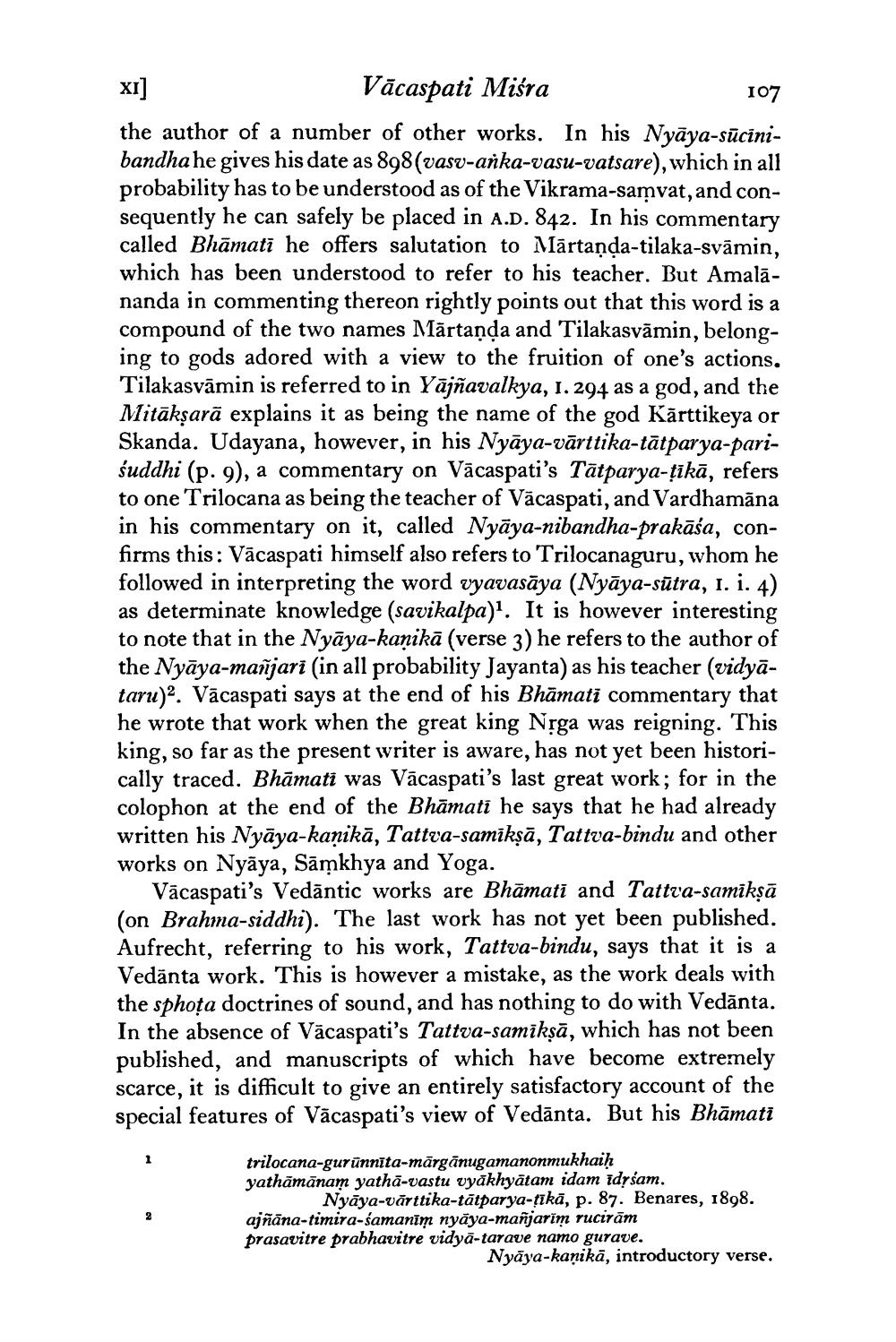________________
Vācaspati Mišra
107 the author of a number of other works. In his Nyāya-sūcīnibandha he gives his date as 898(vasv-anka-vasu-vatsare), which in all probability has to be understood as of the Vikrama-samvat, and consequently he can safely be placed in A.D. 842. In his commentary called Bhāmati he offers salutation to Mārtanda-tilaka-svāmin, which has been understood to refer to his teacher. But Amalānanda in commenting thereon rightly points out that this word is a compound of the two names Mārtanda and Tilakasvāmin, belonging to gods adored with a view to the fruition of one's actions, Tilakasvāmin is referred to in Yājñavalkya, 1. 294 as a god, and the Mitākṣarā explains it as being the name of the god Kārttikeya or Skanda. Udayana, however, in his Nyāya-vārttika-tātparya-pariśuddhi (p. 9), a commentary on Vācaspati's Tātparya-țīkā, refers to one Trilocana as being the teacher of Vācaspati, and Vardhamāna in his commentary on it, called Nyāya-nibandha-prakāśa, confirms this: Vācaspati himself also refers to Trilocanaguru, whom he followed in interpreting the word vyavasāya (Nyāya-sūtra, 1. i. 4) as determinate knowledge (savikalpa). It is however interesting to note that in the Nyāya-kanikā (verse 3) he refers to the author of the Nyāya-masjari (in all probability Jayanta) as his teacher (vidyātaru)2. Vācaspati says at the end of his Bhāmati commentary that he wrote that work when the great king Nrga was reigning. This king, so far as the present writer is aware, has not yet been historically traced. Bhāmati was Vācaspati's last great work; for in the colophon at the end of the Bhāmati he says that he had already written his Nyāya-kanikā, Tattva-samiksā, Tattva-bindu and other works on Nyāya, Sāmkhya and Yoga.
Vācaspati's Vedāntic works are Bhāmati and Tattva-samikṣā (on Brahma-siddhi). The last work has not yet been published. Aufrecht, referring to his work, Tattva-bindu, says that it is a Vedānta work. This is however a mistake, as the work deals with the sphoța doctrines of sound, and has nothing to do with Vedānta. In the absence of Vācaspati's Tattva-samikṣā, which has not been published, and manuscripts of which have become extremely scarce, it is difficult to give an entirely satisfactory account of the special features of Vācaspati's view of Vedānta. But his Bhāmati
trilocana-gurünnīta-mārgānugamanonmukhaih yathāmānam yathā-vastu vyakhyātam idam idysam.
Nyāya-vārttika-tātparya-țīkā, p. 87. Benares, 1898. ajñāna-timira-samanīm nyāya-mañjarim rucirām prasavitre prabhavitre vidyā-tarave namo gurave.
Nyāya-kanikā, introductory verse.




